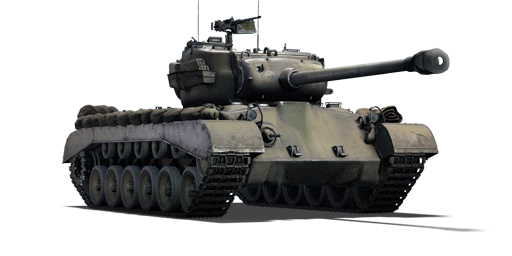Though the M4 Sherman is ubiquitous among the Allied forces of World War II, the Americans began to seek out a potential replacement. The start of the search began in the T20 medium tank. As the war raged, the technological arms race introduced newer requirements from the tank, such as the request for more firepower and armour over the M4. The culmination of the design work led to the T26E3 heavy tank, which featured thicker sloped armour, a 90 mm gun, and torsion bar suspension. The T26E3 would be adopted as the M26 Pershing, but arrived in early 1945, too late to significantly impact the course of World War II. After being reclassified as a medium tank in the post-war period, the M26 continued to see service in the Korean War before being retired.
The M26 was added alongside the American ground tree in Update 1.45 "Steel Generals". The play style is a considerable departure from the more mobile and lighter M4 Shermans that players would be used to now. At the same time, its specifications are fairly middle-of-the-road. The M26 lacks speed to be a quick responder. Armour is improved over the M4, but many of the higher-velocity cannons employed by other tanks at its rank can penetrate its armour. The 90 mm damage can be devastating, especially the post-penetration damage of the 90 mm M82 round, but the penetration is such that it may not penetrate the front glacis of most vehicles it faces. The M26 requires a skilled player to make the most of its strength and limitations, but can provide very promising gameplay in the right hands and situations.















